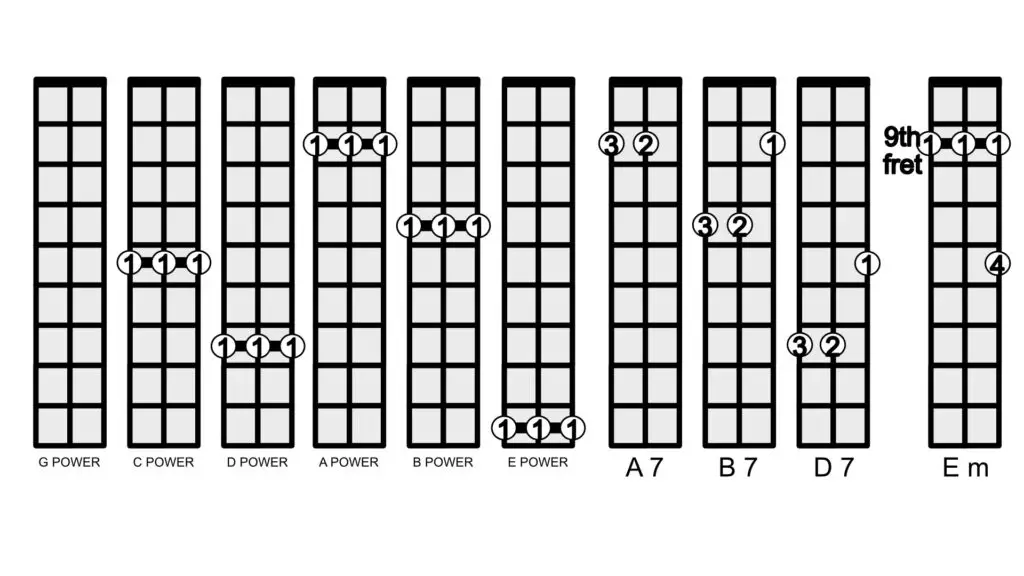A chord progression is the way a group of chords is arranged in a piece of music. Some chord progressions are very commonly used and it’s well worth taking the time to get really good at moving between these chords so that you can play songs smoothly. Here is my step-by-step beginner guide:
Know The Chords Before You Start Trying To Play Them In A Song
When I say know the chords, I mean really know them. You need to be able to jump your fingers into position really quickly so it’s no good if you need to check a chord diagram part way through your song. Practise all the chords until you know that your fingers are secure in knowing what they need to do to play the chord.
Practice Moving Between The First Two Chords
Without trying to keep in time, move from the first chord to the second until you can do it smoothly and practically without thinking. If you are having trouble getting the chords to sound clean, I have some tips for you in these articles and this video:
Once you can move from the first chord to the second, practise going back to the first until you can move between them freely.
Practice Moving Between The Next Two Chords
In the same way that you practised before, now try moving between the next two, forward and back, until you can do it smoothly.
Practice Moving Between All The Chords In The Song
Carry on breaking the song down into chunks and learn to move freely between the chords as required. I know you will be impatient to play the whole song, but until you get the chord transitions smooth, you will always end up with a break in your playing between chord changes. This habit is hard to break and will make your guitar playing sound bad. Nobody wants to listen to a guitarist struggling to find the next chord.
Common Chord Progressions To Practice
The family of chords that make up most easy three chord songs in G are G, C and D. You will recognise these chord sounds from many, many songs, including the twelve bar blues, many Beatles songs and countless others. Practise this chord progression:
G C G D G C D G These chords can be played as one finger power chords on open strings, fifth fret and seventh fret or as shaped chords as shown below.

I’ve included the shaped chord for D7 rather than D power as this is a shape that is not too difficult to play.
Because the guitar is often tuned to open G, it’s easy to get stuck thinking that we need to play everything in G but if you want to play along to the radio or backing tracks or other instrumentalists or singers, you really need to be able to play in a variety of keys.
Instead of learning lots of fancy stuff in the key of G, consider learning to play easy 3 chord progressions in a variety of keys.
This chart will help you to get started with what we call the one, four, five chords in a variety of keys, enabling you to play simplified versions of many many songs at a pitch that suits your voice or fits in with other instruments/ voices. Use power chords or easy chord shapes when you start.
| Key Of Song | I ( one) Chord- may be played as a power chord or major chord | IV ( four) Chord – may be played as a power chord or major chord | V (five) Chord- may be played as a power chord or 7th chord |
| G | G | C | D |
| A | A | D | E |
| C | C | F | G |
| D | D | G | A |
| E | E | A | B |
These chord charts below will help you to get started:

Easiest Way To Play Chord Progressions
If you want to stick to one finger power chords, see this article for a free download that will help you: https://beginnercbg.com/beginners-guide-to-one-four-five-chords-on-cigar-box-guitar/
Don’t worry about the theory if you find it confusing, just scroll down to the free download.
